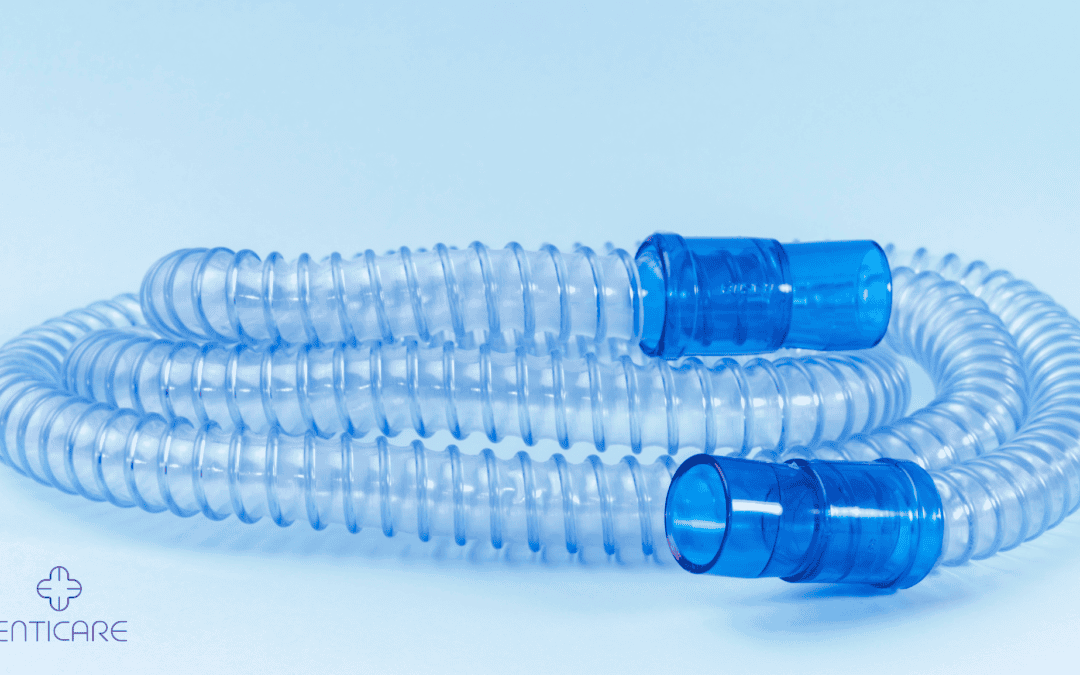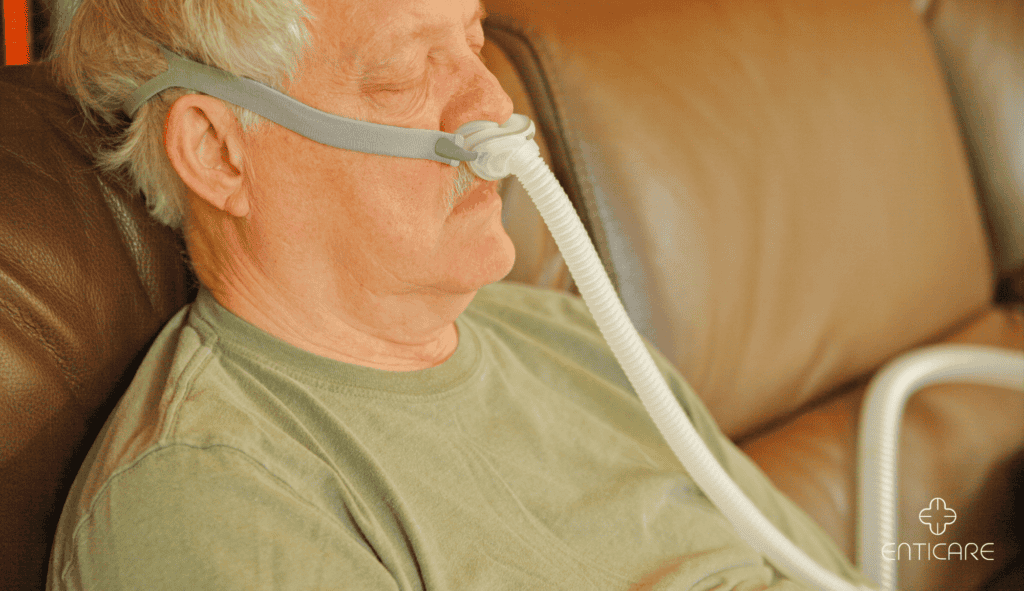Waking up with a dry, irritated throat or a mask full of condensation disrupting your sleep? You’re not alone. Many CPAP users experience these discomforts due to the cool, dry air delivered by the machine or by the overly moistened air from the humidifer.
CPAP therapy is a lifesaver for millions struggling with sleep apnea. However, the constant flow of air can sometimes feel dry and uncomfortable, especially during colder months. This discomfort can lead to mask leaks, dry mouth, and even disrupt your sleep. Enter heated tubing, a simple yet powerful tool that can transform your CPAP therapy experience.
Heated tubing offers a solution by warming up the walls of the tube to match the warm, humidified air traveling from your CPAP machine to your mask. This not only improves comfort but also addresses some common CPAP side effects. Let’s explore the benefits of heated tubing and how to determine if it’s right for you.

Understanding Heated Tubing
-
- The Science Behind the Warmth: Heated tubing is equipped with electrical wires that run along its length. These wires gently warm the tube as the air travels from the humidifier (if you use one) to your mask.
- Combating Condensation: Warm air holds more moisture, and the warmed tubing prevents condensation from forming in the tubing. This eliminates the issue of “rainout,” where water droplets accumulate in the cool tubing and potentially run in the direction of the airflow, into your mask.
- Enhanced Comfort: By warming the tube, more moisture stays suspended in the pressurized air, and it creates a more natural breathing experience, reducing dryness and irritation in your nose and throat.
Benefits of Using Heated Tubing
-
- Reduced Rainout: No more waking up to a wet mask! Heated tubing significantly reduces condensation, ensuring a comfortable and uninterrupted sleep.
- Improved Comfort: Warmed and humidifed air feels more natural and less drying, leading to a more comfortable breathing experience throughout the night.
- Reduced Mask Leaks: Less condensation means fewer mask leaks, ensuring optimal therapy and preventing air from escaping and disturbing your sleep.
- Potential for Lower Humidifier Settings: If you find higher humidifier settings create congestion, heated tubing can allow you to lower the humidifier level while still maintaining moisture in the air.
Who Can Benefit Most From Heated Tubing?
While everyone can benefit from heated tubing, some individuals see even greater advantages:
-
- Those Prone to Rainout: If you live in a cooler climate, keep your bedroom at a low temperature and experience frequent rainout, heated tubing is a game-changer.
- Individuals with Sensitive Skin: Dry air can irritate sensitive skin. Heated tubing can help alleviate this discomfort.
- People Who Struggle with Dry Mouth: Warmed and moistened air feels less drying, potentially reducing dry mouth and improving sleep quality.
- CPAP Users with Sinus Issues: Warmed air can be soothing for those with sinus congestion.
When to Consider Alternatives
Heated tubing isn’t for everyone. Here are some situations where alternatives might be preferable:
-
- You Live in a Warm Climate: If you live in a warm climate and don’t experience rainout, you might not need heated tubing. However, it is recommended that bedroom temperatures be kept in the mid 60s Fahrenheit, which can lead to condensation in an unheated tube
- Cost Considerations: Heated tubing typically costs more than standard tubing. Weigh the cost against the potential benefits for your situation.
- Concerns About Electrical Safety: If you have concerns about using electrical components near your bed, discuss them with your doctor.
Using Heated Tubing Effectively
-
- Talk to Your Doctor: Discuss the potential benefits of heated tubing with your doctor. They can help you determine if it’s right for your specific needs.
- Compatibility Check: Ensure the heated tubing is compatible with your CPAP machine model.
- Temperature Settings: Most heated tubing allows you to adjust the temperature for optimal comfort.
- Cleaning and Maintenance: Regularly clean your heated tubing according to the manufacturer’s instructions to maintain optimal functionality.
Heated tubing can significantly improve your CPAP therapy experience by reducing rainout, enhancing comfort, and potentially allowing for lower humidifier settings. If you struggle with dry air, mask leaks, or discomfort during CPAP therapy, discuss heated tubing with your doctor. It might be the missing piece for a more restful and comfortable night’s sleep.
And if you have any questions, don’t hesitate to contact Enticare, our expert team is here to assist you every step of the way. Let us help you find the best course of treatment. Call us at 480-214-9000. Remember, restful sleep awaits!


